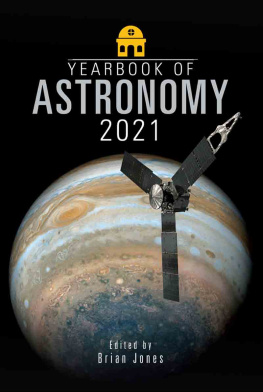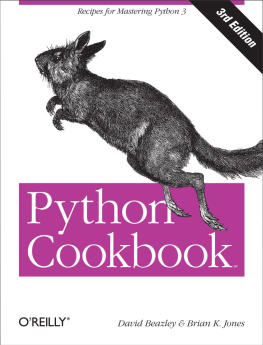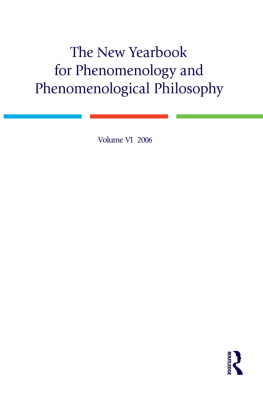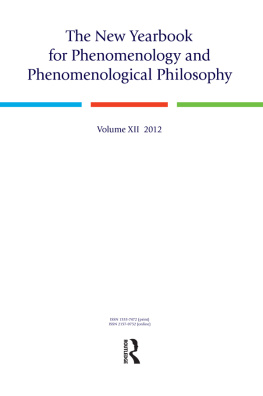Brian Jones (editor) - Yearbook of astronomy. 2021
Here you can read online Brian Jones (editor) - Yearbook of astronomy. 2021 full text of the book (entire story) in english for free. Download pdf and epub, get meaning, cover and reviews about this ebook. year: 2020, genre: Home and family. Description of the work, (preface) as well as reviews are available. Best literature library LitArk.com created for fans of good reading and offers a wide selection of genres:
Romance novel
Science fiction
Adventure
Detective
Science
History
Home and family
Prose
Art
Politics
Computer
Non-fiction
Religion
Business
Children
Humor
Choose a favorite category and find really read worthwhile books. Enjoy immersion in the world of imagination, feel the emotions of the characters or learn something new for yourself, make an fascinating discovery.
- Book:Yearbook of astronomy. 2021
- Author:
- Genre:
- Year:2020
- Rating:5 / 5
- Favourites:Add to favourites
- Your mark:
- 100
- 1
- 2
- 3
- 4
- 5
Yearbook of astronomy. 2021: summary, description and annotation
We offer to read an annotation, description, summary or preface (depends on what the author of the book "Yearbook of astronomy. 2021" wrote himself). If you haven't found the necessary information about the book — write in the comments, we will try to find it.
Yearbook of astronomy. 2021 — read online for free the complete book (whole text) full work
Below is the text of the book, divided by pages. System saving the place of the last page read, allows you to conveniently read the book "Yearbook of astronomy. 2021" online for free, without having to search again every time where you left off. Put a bookmark, and you can go to the page where you finished reading at any time.
Font size:
Interval:
Bookmark:

Yearbook of Astronomy 2021
Front Cover: Launched in 2011 and arriving at Jupiter in 2016, NASAs JUNO spacecraft is currently in a polar orbit that takes it out as far as 8 million kilometres before passing as close as 4,200 kilometres to Jupiters cloud tops. It is visualised here passing over Jupiters south pole. More information on the JUNO mission can be found in the articles Solar System Exploration in 2019 and Solar System Exploration in 2020 in the corresponding editions of the Yearbook of Astronomy . (NASA/JPL-Caltech)

EDITED BY
Brian Jones

First published in Great Britain in 2020 by
WHITE OWL
An imprint of
Pen & Sword Books Ltd
Yorkshire Philadelphia
Copyright Brian Jones, 2020
ISBN 978 1 52677 187 2
eISBN 978 1 52677 188 9
Mobi ISBN 978 1 52677 189 6
The right of Brian Jones to be identified as Author of this work has been asserted by him in accordance with the Copyright, Designs and Patents Act 1988.
A CIP catalogue record for this book is available from the British Library.
All rights reserved. No part of this book may be reproduced or transmitted in any form or by any means, electronic or mechanical including photocopying, recording or by any information storage and retrieval system, without permission from the Publisher in writing.
Pen & Sword Books Ltd incorporates the Imprints of Pen & Sword Books Archaeology, Atlas, Aviation, Battleground, Discovery, Family History, History, Maritime, Military, Naval, Politics, Railways, Select, Transport, True Crime, Fiction, Frontline Books, Leo Cooper, Praetorian Press, Seaforth Publishing, Wharncliffe and White Owl.
For a complete list of Pen & Sword titles please contact
PEN & SWORD BOOKS LIMITED
47 Church Street, Barnsley, South Yorkshire, S70 2AS, England
E-mail:
Website: www.pen-and-sword.co.uk
or
PEN AND SWORD BOOKS
1950 Lawrence Rd, Havertown, PA 19083, USA
E-mail:
The Yearbook of Astronomy 2021 is the latest edition of what has long been an indispensable publication, the annual appearance of which has been eagerly anticipated by astronomers, both amateur and professional, for nearly sixty years. Approaching its Diamond Jubilee edition in 2022, the Yearbook of Astronomy is, as ever, aimed at both the armchair astronomer and the active backyard observer. Within its pages you will find a rich blend of information, star charts and guides to the night sky coupled with an interesting mixture of articles which collectively embrace a wide range of topics, ranging from the history of astronomy to the latest results of astronomical research; space exploration to observational astronomy; and our own celestial neighbourhood out to the farthest reaches of space.
The Monthly Star Charts have been compiled by David Harper and show the night sky as seen throughout the year. Two sets of twelve charts have been provided, one set for observers in the Northern Hemisphere and one for those in the Southern Hemisphere. Between them, each pair of charts depicts the entire sky as two semi-circular half-sky views, one looking north and the other looking south.
Lists of Phases of the Moon in 2021 and Eclipses in 2021 are also provided, together with general summaries of the observing conditions for each of the planets in The Planets in 2021 , and a calendar of significant Solar System events occurring throughout the year in Some Events in 2021 .
The ongoing process of improving and updating what the Yearbook of Astronomy offers to its readers is continued in the 2021 edition with the introduction of apparition charts for Mars, Jupiter and Saturn. All the planetary apparition charts have been compiled by David Harper and the inclusion of the three listed here ensures that charts are now supplied for all the major planetary members of our Solar System. Further details of the planetary apparition charts are given in Using the Yearbook of Astronomy as an Observing Guide .
As with The Planets in 2021 and Some Events in 2021 , the Monthly Sky Notes have been compiled by Lynne Marie Stockman and give details of the positions and visibility of the planets for each month throughout 2021. Each section of the Monthly Sky Notes is accompanied by a short article, the range of which includes items on a variety of astronomy-related topics such as Astronomical Illustrations of the Nuremberg Chronicle by Richard Sanderson, 2I/Borosov: Interstellar Comet by Neil Norman and Burying the Sun by Carolyn Kennett together with a trio of biographical articles relating to astrophysicist Alfred Fowler, double star observer Thomas Henry Espinell Compton Espin, and one of the best known astronomers of all time, Tycho Brahe.
The Monthly Sky Notes and Articles section of the book concludes with a trio of articles penned by Neil Norman, these being Comets in 2021 , Minor Planets in 2021 and Meteor Showers in 2021 , all three titles being fairly self-explanatory describing as they do the occurrence and visibility of examples of these three classes of object during and throughout the year.
In his article Astronomy in 2020 Rod Hine covers a range of topics, including taking a look at potential problems revealed by results gleaned from the Planck Observatory, which operated from 2009 to 2013 and which provided extensive data on Cosmic Microwave Background radiation. The problems that seem to have arisen for cosmologists relating to the amount of dark matter in the Universe are examined, and how this may (or may not) be resolved once the Simons Observatory in Chile begins operations in the early-2020s.
This is followed by Solar System Exploration in 2020 in which Peter Rea covers a wide range of ongoing space missions. These include the collection and return to Earth of samples from the surfaces of two asteroids, one being 162173 Ryugu by the Japanese Hyabusa 2, and the other 101955 Bennu, which has been the target of the American OSIRIS-Rex. The ambitious goals of both these missions highlight the incredible advances that our exploration of other planetary members of the Solar System has made in recent years.
In 2021 we celebrate the 450th anniversary of the birth of Johannes Kepler, best known for his three Laws of Planetary Motion published between 1609 and 1618. Neil Haggath discusses some of Keplers work in his article Anniversaries in 2021 as well as drawing to our attention the centenaries of the deaths of several other notable astronomers. These include the 350th anniversary of the death of Italian Jesuit astronomer Father Giovanni Battista Riccioli, who is credited for introducing the system of lunar nomenclature still in use today; the 150th anniversary of the death of Sir John Herschel, son of the great observer Sir William Herschel; and the centenary of the death of American astronomer double star observer Sherburne Wesley Burnham, who is best known for the discovery of 1,340 double stars and for the publication of the Burnham Double Star Catalogue, which listed 13,665 binaries.
The article Mission to Mars: Countdown to Building a Brave New World by Martin Braddock is the first in a series of articles scheduled to appear in the Yearbook of Astronomy throughout the 2020s and which will keep the reader fully up to date with ongoing preparations that will have been conducted so far. New research and preparations are currently underway and in the planning phase, all of which are geared towards sending a manned mission to Mars at or around the end of the decade. We are at the start of what promises to be an exciting journey.
Font size:
Interval:
Bookmark:
Similar books «Yearbook of astronomy. 2021»
Look at similar books to Yearbook of astronomy. 2021. We have selected literature similar in name and meaning in the hope of providing readers with more options to find new, interesting, not yet read works.
Discussion, reviews of the book Yearbook of astronomy. 2021 and just readers' own opinions. Leave your comments, write what you think about the work, its meaning or the main characters. Specify what exactly you liked and what you didn't like, and why you think so.










